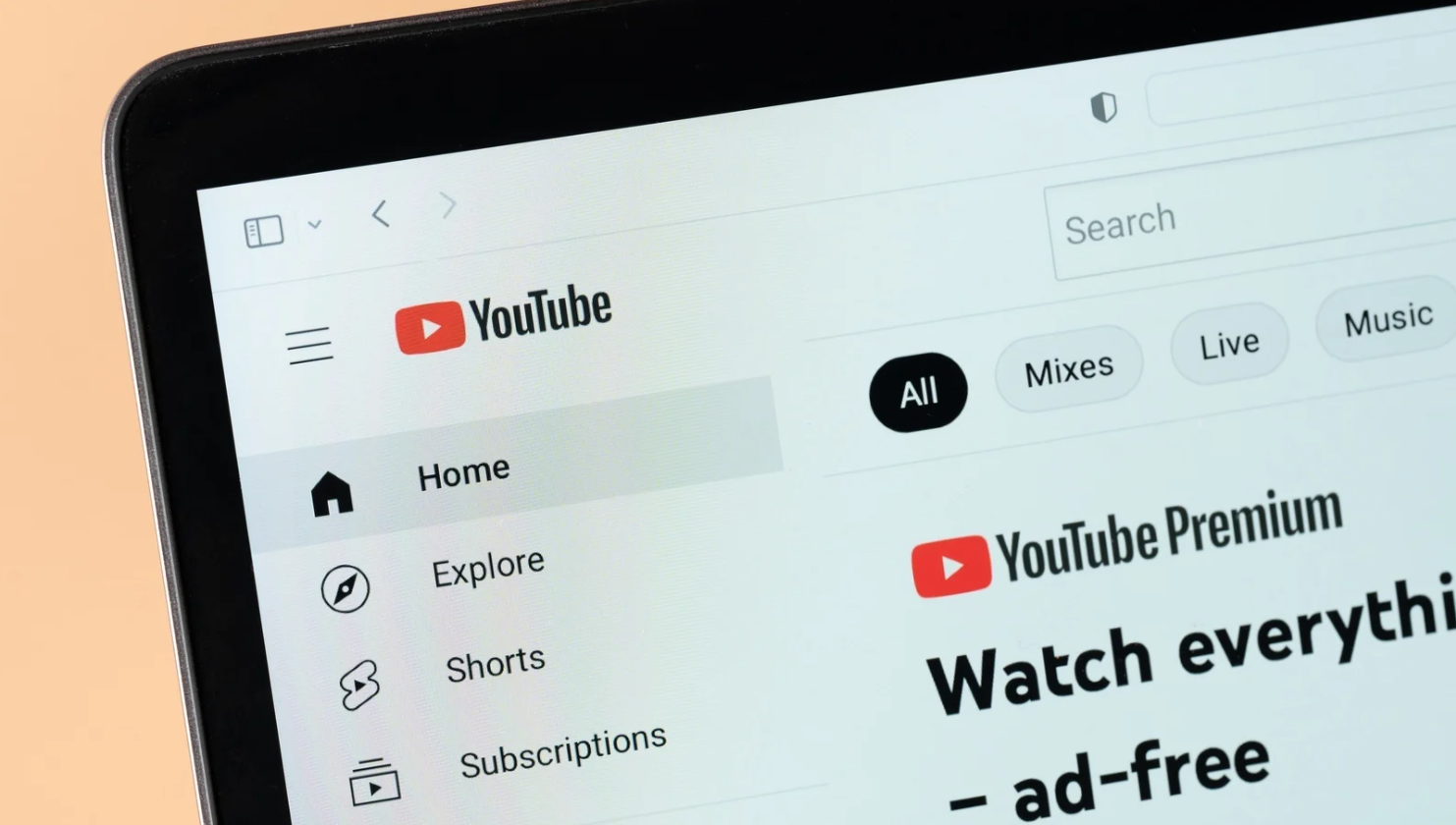YouTube has confirmed that it is escalating its efforts to limit VPN users who are accessing its premium plans at lower costs. This strategy arises from a growing issue of paying subscribers exploiting regional price differences for YouTube’s Premium and Music Premium services. VPN, or Virtual Private Network, technology allows users to mask their physical location and appear as if they are accessing the internet from another country.
Many users use this approach to subscribe to YouTube’s services at a lower price than what they would pay in their own country. This has led YouTube to initiate a crackdown on such practices, with the aim of ensuring that users pay the accurate price for their location. The tech giant has begun to issue warnings to users it suspects of using VPNs for this purpose, threatening to terminate their subscriptions if they do not comply.
While VPNs have legitimate uses, such as maintaining online privacy and security, this development has raised concerns about possible overreach and the implications for digital rights. However, from a business perspective, YouTube’s actions could be seen as an attempt to maintain fairness and protect revenue. It is yet unclear how effective this crackdown will be, as the cat-and-mouse game between tech companies and savvy internet users continues.

Details of YouTube’s New Policy on VPN Usage
YouTube, a popular global video-sharing platform, recently updated its policy on the use of Virtual Private Networks (VPNs). The new policy suggests that the platform is becoming more stringent in controlling VPN usage, primarily used to bypass geographical restrictions put in place by the platform. VPNs allow users to mask their IP addresses, making it appear as if they are accessing the internet from a location different than their actual physical location.
This allows consumers to access content that may not be otherwise available in their region. However, the fresh policy stipulates that YouTube will take active measures in limiting this practice. The platform argues that this is necessary to maintain content licensing agreements with creators and distributors, who often restrict their content to certain regions for commercial reasons. YouTube has not shared specific details about how they plan to enforce this updated policy.
However, it’s speculated that the platform might employ advanced tracking technology to identify and block VPN users. The new policy has sparked a debate among users, as some argue it infringes on their internet freedom, while others support the protection of content licensing agreements. The policy’s impact on YouTube’s global user base and the wider digital landscape remains to be seen. This measure taken by YouTube underlines the evolving dynamics of internet usage, privacy, and content availability.
Reasons Behind YouTube’s Crackdown on VPN Users
YouTube’s decision to clamp down on VPN users is driven by a multitude of factors, primarily centered around their commitment to uphold content licensing agreements and to maintain a level of transparency about their users’ locations. Content on the platform is often region-specific due to licensing agreements with creators and publishers.
These contracts specify where the content can be shown, and using a VPN to access it outside of the agreed-upon regions violates these agreements. Consequently, YouTube has to ensure that these contracts are not breached, which is why they have taken a stringent stance on VPN usage.
Moreover, advertising is another crucial aspect of YouTube’s revenue model. Advertisers pay to target specific demographics and geographies. VPNs mask the true location of users, making targeted advertising less effective and potentially causing revenue loss for both YouTube and the advertisers. To make sure that advertisers are getting what they pay for, YouTube needs to be able to accurately locate its users.
Furthermore, YouTube’s crackdown on VPNs is also tied to the prevention of cyber abuse on the platform. VPNs are often utilized by individuals to launch cyber attacks, spamming, and other forms of online abuse. By enforcing a stricter policy on VPN usage, YouTube is taking a step towards ensuring a safer environment for its users.
Lastly, YouTube’s commitment to respecting each country’s specific regulations and cultural norms also play a role in their crackdown. Content that might be acceptable in one region may not be in another. VPNs can bypass these regional content filters, leading to potential cultural insensitivity or conflicts.
In conclusion, while VPN usage may seem innocuous to the average user, it presents a complex web of challenges for a global platform such as YouTube. Their crackdown is an attempt to respect contractual obligations, ensure effective advertising, maintain a safe online space, and uphold cultural respect and sensitivity.

How the Crackdown Affects Current Premium Subscribers
The crackdown on content sharing among premium subscribers is having a significant impact on the current user experience. This new enforcement is primarily aimed at preventing the misuse of login credentials, a common practice among families and friends that has been largely ignored until recently. With the implementation of stricter rules, premium subscribers are now facing limitations on their account access and sharing capabilities.
These changes have been met with mixed reactions from the subscriber base, with some finding it unfair, while others see it as a necessary measure to protect content creators’ rights and revenues. The crackdown, while posing potential inconveniences for some individuals, also aims to ensure that revenue streams are fairly distributed, and that the content provided to subscribers is not being exploited.
This action could also lead to an increase in subscription rates for some users, as the possibility of sharing costs among multiple users will be reduced. Moreover, it may result in an uptick in the number of subscriptions, as people who were previously sharing will now be required to have individual accounts. While this may seem like an advantage for the service providers, it could potentially alienate a portion of their customer base who are not pleased with the changes.
Ultimately, this crackdown on sharing among premium subscribers is reshaping the viewing habits of many users, and may redefine the future of subscription-based services. Acknowledging the impact of these changes on their subscribers, service providers are taking steps to ensure minimal disruption while enforcing these new regulations. They are also striving to communicate adequately and transparently about these changes, to help their subscribers understand and navigate the new rules.
Alternatives for Users Seeking Affordable Premium Plans
As the digital world expands, so does the demand for affordable premium plans. However, the high costs associated with these premium services often deter users who are seeking better features and more seamless experiences. Thankfully, numerous alternatives in the market offer affordable yet high-quality premium services to users. For instance, streaming platforms like Spotify and Netflix provide student and family plans which are significantly cheaper than individual premium plans. These options allow users to split the costs amongst a group while still enjoying the same benefits.
Another alternative is to opt for annual plans instead of monthly subscriptions. Many service providers offer discounted rates for users who commit to long-term contracts, which is a viable option for those who are sure to utilize the service consistently. Similarly, some companies offer bundle deals, combining several services into one package at a lower price. This can be a cost-effective solution for users who utilize multiple services from the same provider.
Moreover, there are also free alternatives that offer similar features to premium plans. For example, certain apps and platforms offer ad-supported versions that, while not as seamless as their premium counterparts, still provide a range of useful functionalities. Lastly, it’s worth considering open-source software. These are often free and customizable, offering many of the perks found in premium plans without the associated cost. By researching and comparing these alternatives, users seeking affordable premium plans can find a solution that fits their budget and meets their needs.

Potential Impact on YouTube’s Global Subscriber Base
The intrinsic potential of YouTube’s global subscriber base is immense and this presents a significant opportunity for growth and innovation. YouTube, being an international platform, hosts a diverse and sprawling user base which forms the core of its successful operation. Any changes or strategic adjustments made by the company inherently have a profound impact on this global audience. For instance, the introduction of new features, such as the ‘YouTube Premium’ subscription, which offers ad-free viewing, offline access to content, and exclusive videos, can stimulate user interest and engagement.
However, it could also potentially lead to a divide amongst subscribers, with those unable or unwilling to afford the new features possibly feeling marginalized. Conversely, efforts to enhance user experience, such as improving video quality or implementing more efficient content algorithms, could significantly bolster the platform’s appeal and subscriber count. The advent of localized content and language specific channels has already positively affected the user base, especially in non-English speaking nations.
This demonstrates the potential for YouTube to further expand its global reach through strategic localisation and diversification. Additionally, the platform’s handling of issues such as fake news, inappropriate content, and cyberbullying can have substantial implications for its reputation and user trust, potentially influencing subscriber numbers.
The large-scale data that YouTube collects from its global subscriber base can also be utilized to drive personalization and better content recommendations, thereby enhancing user retention and engagement. However, any misuse or mishandling of this data can have serious repercussions. Therefore, the potential impact on YouTube’s global subscriber base is multi-faceted and far-reaching, with every decision made by the company having the power to shape the platform’s future.
